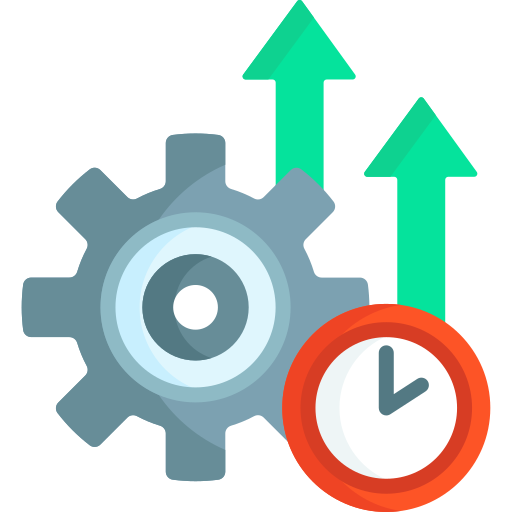
What Is a 2-2-3 Work Schedule and How to Implement It?
Running an organization can be like conducting a well-coordinated symphony, especially when it comes to maintaining a 12-hour working schedule, the harmony of shifts becomes crucial.
Embracing a structured scheduling model is necessary for managing these complex shifts. One such model is 2-2-3 work schedule, a scheduling superhero you might not have met yet. Do you even know that orgaizations use shift scheduling software to seamlessly automate the 2-2-3 work schedule?
So, what exactly is a 2-2-3 work schedule, and how can organizations harness its power for enhanced productivity? This blog unfolds the working of a 2 2 3 routine schedule, opening doors to a new era of workplace flexibility and efficiency.
What is 2-2-3 Work Schedule?
The 2-2-3 work schedule, also known as the Panama schedule, involves organizing employees into four teams to ensure continuous 24-hour coverage. In this pattern, each team follows a sequence of two consecutive day shifts, followed by two days off, and then three consecutive day shifts. This cycle repeats throughout a 28-day rotation before starting anew. Each shift lasts for 12 hours, maintaining consistent weekly work hours for employees while varying their days off within the cycle.
The 2-2-3 pattern can be streamlined as follows:







Let’s break down the Panama schedule with teams A, B, C, and D:

In the first two days of the week, team A handles the day shift, and team B takes on the night shift.

For the next two days, both teams A and B are on time off. To cover, teams C and D step in, with C working the day shift and D working the night shift.

Moving on to the next three days, teams A and B resume their shifts, while teams C and D have time off.

In the following week, it switches: teams C and D work the day and night shifts for the first two days, and teams A and B enjoy time off.

Then, for the next two days, teams C and D take time off, and to fill in, teams A and B work the day and night shifts, respectively.
This cycle repeats over the course of the 28-day rotation, providing a structured yet flexible scheduling approach for continuous operations.
What is Shift Work?
Shift work is any work schedule occurring outside the typical hours of 7 am to 6 pm. This can involve evening, night, or early morning shifts, and may be fixed or rotating schedules.
Actually, the origins of the “labor working hours” movement was long back in 1835 when workers in Philadelphia, led by Irish coal heavers, began organizing. By 1836, labor movement publications were for a standard of 8 hours per day of work. As many companies require a 24 hour operation and workforce, shift work has been a constant part of today’s working environment.
What is Shift Scheduling?
Shift work scheduling is the organizing of employees’ shifts to ensure the right employees with right job requirements at the right times. This type of schedule typically involves assigning employees to timed blocks during specific days and times throughout the week.
Efficient scheduling helps companies reduce labor costs, enhance productivity, and foster positive morale among employees. Companies adapt to different shifts. While some firms adhere to fixed shift schedules, others prefer rotating shift schedules.
What is Fixed Shift?
Fixed shift scheduling means employees work the same hours every day, with set times to start and finish work. These hours usually add up to around 35 to 40 hours per week. While there are different shifts like morning, afternoon, or night, they don’t cover all 24 hours. The exact timings and days can vary from one company to another.
Advantages of Fixed Shift

Communication and coordination

A fixed routine

Less operational cost

Work-Life Balance
Drawbacks of Fixed Shift

Tardiness

Absenteeism

Division among employees
Rotating Shift
Rotating shifts means employees work different shifts, such as first/second/third depending on what they are assigned. The rotation pattern, which determines when an employee works each shift, varies and is decided by a manager. Rotating shifts involve scheduled changes in shift assignments over time. For instance, a customer service representative might work six weeks of day shifts followed by six weeks of night shifts.
Advantages of Rotating Shift

Experience different work environments

Broaden skill set, adaptability, & versatility

Shift preferences to explore different work schedules
Disadvantages of Rotating Shift

More fatigue

Increased stress level

Sleeping disorders
Types of 2-2-3 Work Schedule
Various adaptations of the 2-2-3 workweek have evolved to cater to the needs of workplaces requiring continuous 24/7 coverage. They are as follows:
Panama Plus Shift Schedule
The Panama Plus schedule will rotate between two 12-hour shifts and one eight-hour shift. Here, every team will have two weeks of eight-hour weekday shifts within an eight-week cycle of shifts. This shift rotation involves five teams.







Pros
The key benefit of the Panama Plus schedule is its utilization of eight-hour shifts. These shorter work periods provide a significant break and serve as a stress reliever, especially after a stretch of consecutive twelve-hour days.
Additionally, the 280-day rotation ensures that employees do not endure more than two consecutive night shifts, contributing to a healthier work-life balance.

Cons
Despite the benefits, this shift pattern retains two 12-hour workdays, and the alternating nature of day and night shifts can potentially impact employee health and overall well-being negatively.
The extended duration of these shifts and the shift between day and night schedules may pose challenges in terms of fatigue and disruption to circadian rhythms, warranting careful consideration and management of potential drawbacks.
Pitman Shift Schedule
The Pitman Schedule, a variant of the 2-2-3 schedule, comprises four teams. They work two day/night shifts, followed by two days of rest, and then three more day/night shifts. This pattern repeats weekly. However, in the second week, it starts with two days of rest, followed by two day/night shifts, and then three rest days.






There are two types of pitman schedules that employers can choose from based on what works best for them and their employees.
1. Fixed schedule
Here, one team works during the day shift, and the other team always works during the night shift. This means that Team 1 consistently works during the day, and Team 2 consistently works during the night for all cycles.
2. Rotating schedule
In this version, teams rotate between day and night shifts. For example, during one cycle, Team 1 might work the day shift, but during the next cycle, they will work the night shift. This rotation continues throughout the cycles.


Pros
Employees appreciate the Pitman schedule for the perk of a three-day weekend every two weeks, ensuring a regular and extended break. Furthermore, the schedule ensures that employees are never obligated to work more than three consecutive days at a stretch, contributing to a balanced work-life arrangement.

Cons
However, a notable drawback of the Pitman shift schedule lies in its relatively slow rotation cycle, which can adversely impact employee sleep schedules. The extended duration of the pattern may lead to disruptions in sleep patterns, potentially affecting overall well-being and highlighting a consideration for the potential downside of this particular shift arrangement.
DDNNOO Schedule
In a DDNNOO schedule, three teams rotate through two days of work, followed by two nights of work, and then enjoy a two-day break. Each shift within this six-day cycle spans 12 hours.





Pros
The DDNNOO approach offers significant advantages, particularly for smaller teams. With only three complete teams required for effective coverage, it streamlines scheduling logistics. Additionally, this straightforward schedule ensures that each team enjoys a consistent two-day weekend at the conclusion of every cycle.

Cons
However, a notable drawback to this method is the potential for employees to accumulate up to 32 hours of overtime during certain weeks. This heightened workload increases the risk of fatigue and burnout, emphasizing the importance of careful management and consideration of the potential downsides associated with increased working hours.
DuPont Schedule
The DuPont shift schedule includes 14 shifts spanning 12 hours each (including both day and night shifts) within a single rotation cycle of 28 days. This equates to each team working a total of 168 hours per cycle. On average, teams work 42 hours per week. Nevertheless, during weeks with six workdays, teams are required to work 72 hours per week.





Regardless of the initial stage, each team progresses through all four stages, completing the entire DuPont schedule by the end of the cycle.

Pros
The DuPont method is great because it’s easy to predict. The schedule follows a regular cycle, making it simple for both employees and employers to plan. With a seven-day break in between, employees can easily schedule vacations, doctor’s appointments, and personal stuff. This makes it easier for employers to manage time-off requests and other administrative tasks smoothly.

Cons
However, the complexity of this shift pattern exposes employees to the challenge of working 72 hours in some weeks, leading to fatigue and stress. Additionally, finding replacements for sick employees can be difficult, risking overworking of staff and disrupting the established shift cycle. It’s important to think carefully and manage things well to avoid these problems with the DuPont Schedule.
Industries Where 2-2-3 Work Schedules Can Be Implemented







Free 2-2-3 Schedule Template from Desklog
Access our complimentary 2-2-3 schedule template from Desklog, a valuable resource for employers aiming to efficiently allocate resources in alignment with the Panama schedule, ensuring continuous services throughout the shifts. The template facilitates the calculation of monthly paid hours and labor costs for each team.

To utilize the template:

Input the total number of employees along with their details, including names and hourly rates.

Equally distribute these employees into four groups.

Provide basic company details such as the company name, logo, address, and phone number.

The default time shift in the 2-2-3 schedule is 12 hours. However, you can customize shift timings to suit your requirements.

Enter the ‘schedule start date,’ and the template will automatically update the dates for the next 28 consecutive days.

As the 2-2-3 schedule operates in a 28-day rotational cycle, the template generates a schedule detailing how each team and their respective employees will work different shifts for the next 28 days.

The template calculates daily paid hours and labor costs against each day based on the team size. Monthly paid hours and labor costs are also summarized at the bottom of each team column.

Pro Tip
Know more about employee efficiency and how to calculate it from our latest blog – What is Employee Efficiency Rate: How to Calculate and Improve It? to understand further information.
Advantages of 2 2 3 Schedule

Serve More Customers
By operating around the clock, this schedule maximizes business availability, acquiring more customer requests and potentially boosting revenue. Extending hours can broaden outreach, attracting a wider clinte base and increasing profits, particularly in industries where constant accessibility is valued.

Enhanced Productivity
The 2-2-3 schedule allows employees to work longer shifts, giving them the time to focus on important tasks until they’re finished. This is especially helpful for tasks that take a lot of time. With this schedule, employees can complete these tasks in a single day by giving them enough time and attention.

Pro Tip
Need to know what the future of productivity looks like? Read our blog ‘The Future of Employee Productivity: Predictions and Trends‘ to understand further information.

More Leisure Time
This schedule offers employees the advantage of working only 180 days annually, which is less than half the year. As a result, it provides them with significantly more days off compared to other schedules. With extended leave periods, employees have the flexibility to plan vacations, attend to personal errands, or enjoy quality time with their families.

Better Work-life Balance
In a 2 2 3 work plan, employees benefit from having 2 or 3 consecutive days off, affording them valuable quality time with their families or the opportunity to embark on short trips to destinations they’ve longed to visit. This extended time away from work rejuvenates employees, leading to increased productivity and higher-quality output upon their return.

Pro Tip
Read our Blog ‘Time Management Tools to Manage Work-life balance‘ to achieve greater work-life balance.
Disadvantages of 2 2 3 Schedule

Prone to Health Issues
The prolonged 12-hour shifts in a 2 2 3 schedule may lead to unhealthy eating habits, weight loss, insomnia, and heightened stress levels, particularly when work hours are extended. Furthermore, shift workers are at increased risk of digestive upsets, obesity, and heart diseases. Furthermore, working over 60 hours per week can compromise the immune system’s function.

Disturbance to Sleep Patterns
Extended work hours and alternating shifts can significantly disrupt natural sleep patterns, leading to exhaustion and fatigue. The frequent transition between day and night shifts further deteriorate these challenges. Moreover, employees working night shifts are also prone to engaging in unhealthy behaviors such as smoking or overeating.

Did you know?
According to research, Longer working hours (more than 55 hours/week) increase the risk of stroke by 35% and heart disease by 17%.
Top Tips for Implementing the 2-2-3 Work Schedule
The 2-2-3 work schedule, with its unique rhythm of two 12-hour shifts, is gaining traction in industries demanding 24/7 operations. But before hitting play on this new schedule, ensure your workplace is in tune with these crucial implementation tips:

Open Communication
Open and honest communication is the foundation for a smooth transition. Clearly explain the working and benefits of the 2-2-3 schedule to all employees, addressing concerns and questions openly. Remember, transparency builds trust and fosters buy-in, essential for successful change.

Respect Preferences
Consider the needs of your team. Choose a time for announcing the new schedule that aligns with employee preferences, allowing them to adjust and ask questions in a comfortable setting. This shows respect and minimizes disruption.

Power Up with Breaks
The longer stretches of work in the 2-2-3 schedule necessitate ample breaks within each shift. Encourage employees to take short breaks to move around, get fresh air, and recharge their minds and bodies. Remember, relaxed employees are focused employees.

Establish Right Start Times
Carefully establish appropriate start times for each shift, considering factors like natural daylight, workload peaks, and employee preferences. For example, early morning shifts might benefit from a slightly later start time to allow for proper sleep and adjustment.

Provide Adequate Light
Lighting plays a crucial role in alertness and well-being during long shifts. Ensure adequate lighting in all work areas, especially for night shifts. Consider using adjustable lighting systems to mimic natural daylight patterns and promote better sleep-wake cycles.

Pro Tip
Well, the 1-3-5 rule is another method to improve productivity. Check out the blog “What is 1-3-5 Rule and how can it boost your productivity to understand further information.
Leverage Automate Shift Scheduling Software
After delving into the intricate details, you would have understood that managing these shifts will be a herculean task. But no worries, we are presenting the best solution to seamlessly manage the 2-2-3 shifts: “Desklog the automated shift scheduling software”.
By leveraging an Desklog employee scheduling software;

Efficient Scheduling
Streamline your scheduling processes by eliminating tedious manual tasks. Quickly create schedules based on employee availability, skills, and workload demands using a user-friendly interface. Effortlessly assign shifts, fill gaps, and manage overlapping needs. Keep everyone on the same page with instant updates for schedule changes, shift swaps, and time-off requests.

Ensuring Compliance and Visibility
Optimize workforce management with overtime tracking and alerts, ensuring compliance with labor laws and preventing excessive workload. Real-time visibility into schedules fosters communication and coordination. Seamlessly manage work hours, breaks, and time-off requests, simplifying absence management and reducing penalties.

Increased Productivity
Eliminate manual errors and miscommunication to prevent missed shifts and coverage gaps. Ensure the right number of employees are scheduled for each shift, minimizing understaffing and overstaffing issues. A smoother scheduling process not only minimizes frustration but also contributes to a workforce that is not only happier but also more productive.

Data-Driven Decision Making
Gain insights into staffing patterns, overtime, and employee preferences to make informed decisions. Identify areas for improvement and optimize scheduling practices for greater efficiency.

Automating the Cycle
Save time by choosing from pre-configured templates designed specifically for the 2-2-3 schedule, reducing manual setup and ensuring accuracy. Automatically generate the four-week rotation for each team, eliminating manual calculations and potential errors. Based on employee preferences, skills, and availability, software can assign shifts according to the 2-2-3 rotation, taking the burden off managers.

Balancing Fairness and Preferences
Define rules to ensure equitable distribution of night shifts, weekends, and desired days off within the 2-2-3 framework. consider employee preferences for specific days and times when creating the schedule, promoting satisfaction and engagement. Allow employees to easily swap shifts with colleagues within the 2-2-3 structure, accommodating personal needs and unforeseen circumstances.

Pro Tip
Learn how to measure and improve employee satisfaction with our comprehensive guide.
Endnote
The 2-2-3 12-hour shift schedule, often referred to as the rotating 2-2-3 schedule or simply the 2 2 3 work schedule, offers a unique approach to workforce management.
This blog has explored the intricacies of implementing such a schedule, shedding light on its potential benefits and challenges. By understanding the nuances of this schedule and leveraging tools like Desklog, the automated shift scheduling software, businesses can navigate the complexities with ease, ensuring a seamless and optimized workflow for both employers and employees alike.
FAQ
1What is the 2-2-3 shift pattern?
The 2-2-3 work schedule typically consists of 4 teams rotating through a pattern of two workdays, followed by two rest days, and then three consecutive workdays. This cycle repeats weekly. However, in the second week, the pattern begins with two rest days, followed by two workdays, and then three rest days.
2What is shift work?
Shift work is when companies change their employees’ working schedules as rotations. Some workers will work during the day shift (morning), while others will work during the night. Businesses using shift work usually operate all day and night, ie, operates 24*7.
3What are the two types of work schedules?
Work schedules generally have two categories: fixed and rotating. In a fixed schedule, employees have the same weekly shifts. On the other hand, a rotating schedule changes shift patterns regularly, particularly effective for businesses running 24 hours a day, 7 days a week.
4What are the most common shifts?
Most common shift includes:
Day shift : Employees that work during the day, between 9am and 5pm.
Night shift : Employees that work during the night, also known as the graveyard shift or third shift. This shift may start at 9 p.m. and may go until 5 a.m.
Split shift : Split shift is divided into two shifts. A worker work the first half of their shift from 8 a.m. to 12 p.m., then have a 4 hours break, and return to work from 4pm to 8pm.
Swing shift : A swing shift is a work schedule where employees work during the late afternoon and evening, often bridging the gap between day and night shifts.
5What are the benefits of 4 on 4 off shifts?
The benefits of 4 on 4 shifts include: improved employee work-life balance, increased productivity, reduced absenteeism and turnover rates, enhanced flexibility.
6What are the benefits of the DuPont schedule?
Increased profitability, more productive teams, enhanced accountability, More days off, Less risk of burnout, etc.
7What is a 4 3 3 4 work schedule?
This schedule entails working for 4 consecutive days followed by 3 days off, then working for 3 consecutive days, and finally having 4 days off. This pattern repeats over a time.
8What is the modified DuPont schedule?
In a modified DuPont schedule, companies have the flexibility to adjust the duration of shifts. Rather than adhering to 12-hour shifts, they can opt for 10-hour shifts or other variations to better suit employee or company preferences.
9What is a 2-2 shift?
A “2-2 shift” is an abbreviated form of a “2-2-3 shift,” where four teams of employees work for 2 consecutive days, followed by 2 days off, and then work another 3 consecutive days.
10What is a 3-2-2 workweek?
A 3-2-2 work schedule means spending 3 days working in the office, 2 days working from home, and having the weekend off. This approach ensures that there is a rotating presence of employees in the office throughout the week.
11What is a 2-2-1 work schedule?
2-2-1 scheduling is also Known as counterclockwise scheduling. This schedule works on two evening shifts, two day shifts and one overnight shift.
